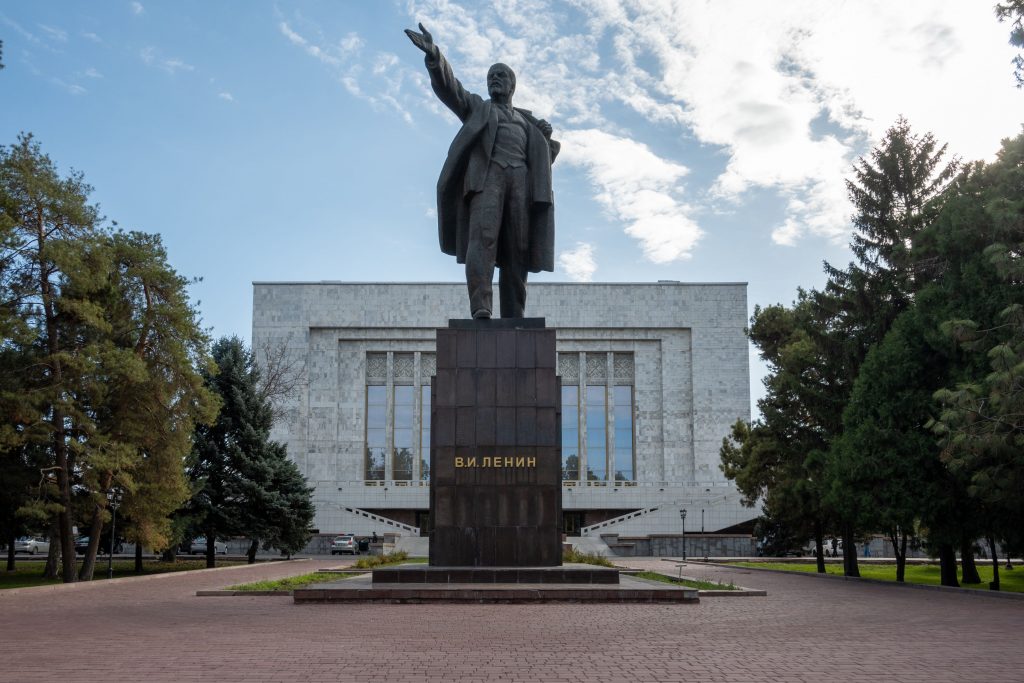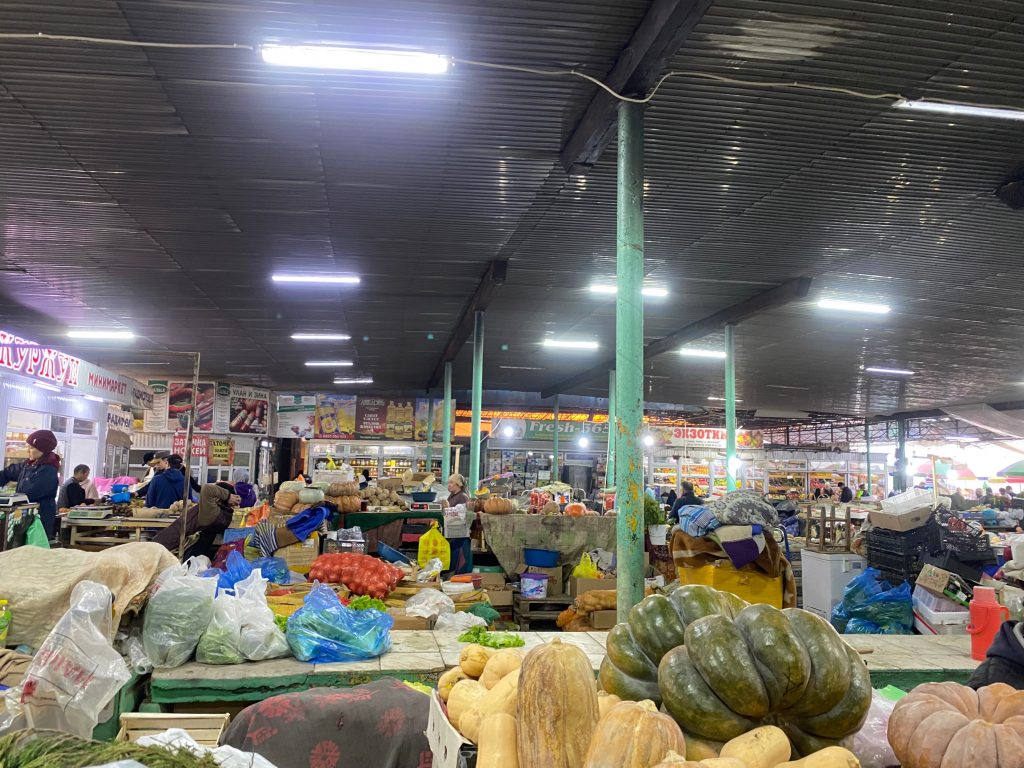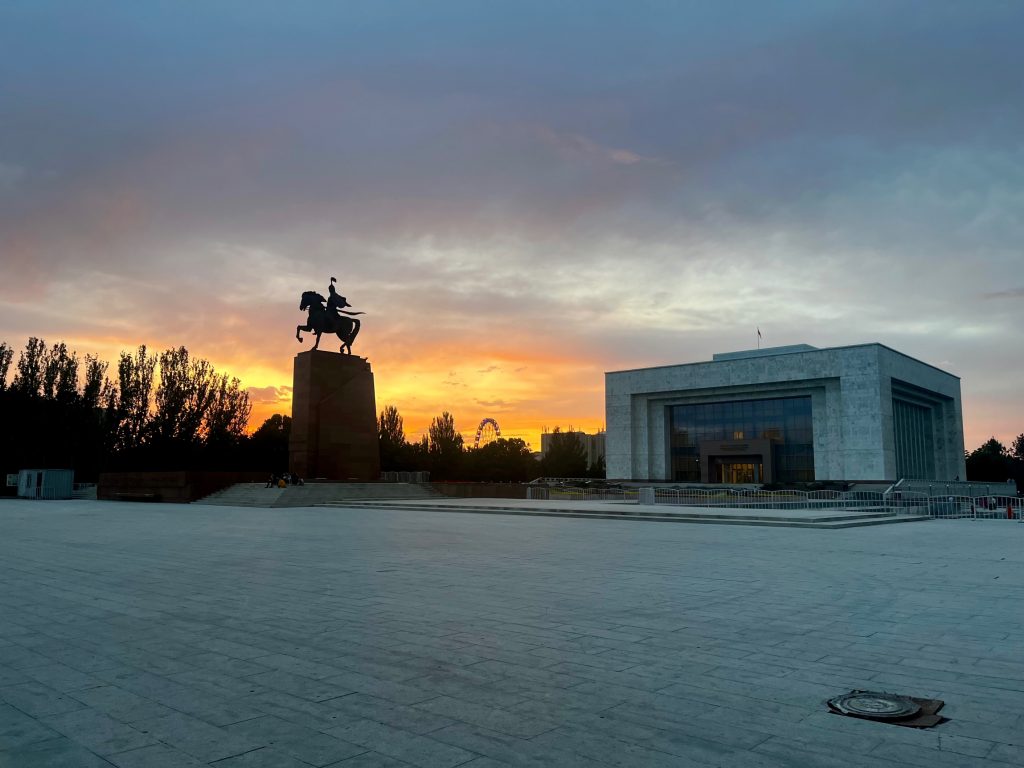Should you visit Bishkek? One of my favourite facts I tell people about Kyrgyzstan is that it has the most misspelled country name in English.
Yes, it is undeniable that any word spelt with a combination of y’s and z’s is not going to be easy for the average Anglophone to remember. However, it also says a lot about the country’s obscurity on the international stage, and the lack of knowledge regarding Kyrgyzstan from the outside world.
For the adventuring few that do make it to this land, it is usually for the country’s stunning natural beauty and the call of the alpine peaks. After all, this is the 3rd most mountainous state on earth – 9/10ths of Kyrgyz territory is covered by them.
With this combination, you’d be forgiven for thinking that there are good reasons for Kyrgyzstan’s cities not having any international prominence. And, yes, it is true that mentioning Bishkek, the city’s capital, or Osh, the “Southern” capital, solicits the reaction of “what?” or “where?” from the vast majority of people.
However, these two cities are fascinating destinations in their own right, albeit for very different reasons from each other.
In this mini-series, we’ll look at the two biggest cities in Kyrgyzstan – Bishkek and Osh – how to travel between them, and what they say about the country. This is why you should visit Bishkek.
So, how did Bishkek start out?
Bishkek is the capital of Kyrgyzstan, and home to around a million people depending on when you visit. This is the biggest city in a country that has retained a strong nomadic heritage, so Bishkek swells as nomads come down from the mountains in winter.
Certainly, by regional standards, it is a new settlement. Having been established as a fortress at the start of the 19th century, it was conquered by the Russians in 1868, who built a town, Pishpek. This is allegedly the old Kyrgyz word for the paddle used to churn Kymyz, the distinctive fermented Mares milk served across the country.
Much of the city as we know it today was planned by Interhelpa volunteers, who came to visit Bishkek from Central and Eastern Europe to build up the Socialist system in places like Kyrgyzstan. The first (and largest) group of volunteers came from Czechoslovakia, and they bought their architectural styles with them.
The Czech’s love of parks and wide boulevards means that much of the city feels like Prague or even (at a push) Paris, even today. The peaks of the Tien Shan – which stretch up to 7,000m high – tower majestically over the city, a welcoming constant.
The Soviets also renamed the town Frunze, after a legendary Soviet military commander who was born here. Russians, Ukrainians, and Volga Germans emigrated en masse to the new city, and even today the city has a large Slavic population. Those who visit Bishkek today will find that Russian is still very much the business, educational, and social language of the city.

The city also took on the role of the capital of the newly established Kyrgyz SSR. This was part of the Soviet’s strategy of demarcating its territory into republics corresponding to that area’s main ethnicity.
Throughout the Soviet period, the city’s population swelled. An administrative class was established, and nomads came to Frunze to escape the collectivization of their land. It was generally a gritty and industrial place, but the city’s green spaces made life pleasant, and a collection of grandiose Soviet buildings were built in the 1960s and 70s.
Bishkek in independent Kyrgyzstan:
Upon independence, the city was renamed (again) upon Kyrgyz independence to Bishkek, a modified version of the original name. This makes sense when you consider that the “P” and “F” sounds do not exist in the Kyrgyz language.
Kyrgyzstan also became the “free-trade” capital of Central Asia, joining the World Trade Organization in 1998 and liberalizing its economic regulations. This meant that any trader wanting to do business between China and Central Asia came through Bishkek.
As a result, another one of Bishkek’s strengths became its vibrant market culture – no less than four major bazaars are still found in the city’s limit.

The capital has also retained much of its original Soviet architecture and infrastructure. This is unique, as anyone who has visited other major cities in Central Asia can attest. While much of this is undoubtedly down to Kyrgyzstan’s near-constant political turmoil and struggling economy, there are more nuanced reasons for this.
Most of the states of Central Asia have developed authoritarian, centralized governments. In Kyrgyzstan, however, this has generally not been the case. This has had the unintended consequence of fossilizing the city.
Bishkek has limited the number of crass, extravagant infrastructure projects that other Central Asian republics have such a penchant for.
When decision-makers in, say, Dushanbe decide to demolish a neighbourhood, people rarely resist. Why would you risk ending up in police detention to protest – especially knowing that the government will likely press ahead anyway?
However, in Kyrgyzstan, there is a vibrant civil society. Such a move would trigger real community networking and organized opposition. The municipality and central government, as a result, cannot just demolish an apartment block to make way for a huge shopping mall or excessive monument.
Therefore, the Soviet infrastructure remains. Even the most arrogant politician knows better than to provoke a crowd of angry babushkas being threatened with eviction.
After all, in Kyrgyzstan, overthrowing the government is the unofficial national pastime.
So, what should I do there?
To be clear, Bishkek is definitely modernizing. It now has a formidable coffee culture and a smattering of expensive hotels and restaurants.
However, those who visit Bishkek long-term state that the city feels like Almaty or a provincial Russian city did fifteen years ago.
This does have many benefits, especially for visitors who love history and architecture, or those wanting to withdraw from an increasingly globalized world. For those who visit Bishkek, Soviet monuments, mosaics, bus stops, and buildings abound, even if some of them are a bit rough around the edges.
What the city doesn’t have in “traditional” tourist attractions, it more than makes up for through its dynamic nightlife, walkable ambiance, and abundance of on-the-doorstep natural attractions.
Take a stroll through Ala-Too Square, join locals in playing fair games in the park, or pop into one of the city’s many museums.

Alternatively, hop on a marshrutka – the Soviet-style minibuses – and head down for some bartering at Osh Bazaar. The ride will cost you a princely sum of 12 cents.
If, after all of this, you still have energy, you can go and party, party, party to your heart’s content. The city has a formidable collection of gastropubs and a growing selection of real ale producers, which host both locals and those who visit Bishkek alike. Then, there are many underground bars, which are great places to go before heading to the club – Ailan Bar and Suzie Wong come highly recommended!
How do I get there?
Wondering the best way to experience Bishkek? Look no further than YPT! We come to Kyrgyzstan at least 4 times a year as part of our “Five Stans” trip, spending at least a night each time to visit Bishkek.
Alternatively, if you want to organize a private tour to suit your needs, time, and interests, let us know and we will craft the itinerary of your dreams. We can put together anything from a city tour to more specialized schedules such as architecture or political tours. Want to visit Bishkek? We’ll see you there!





